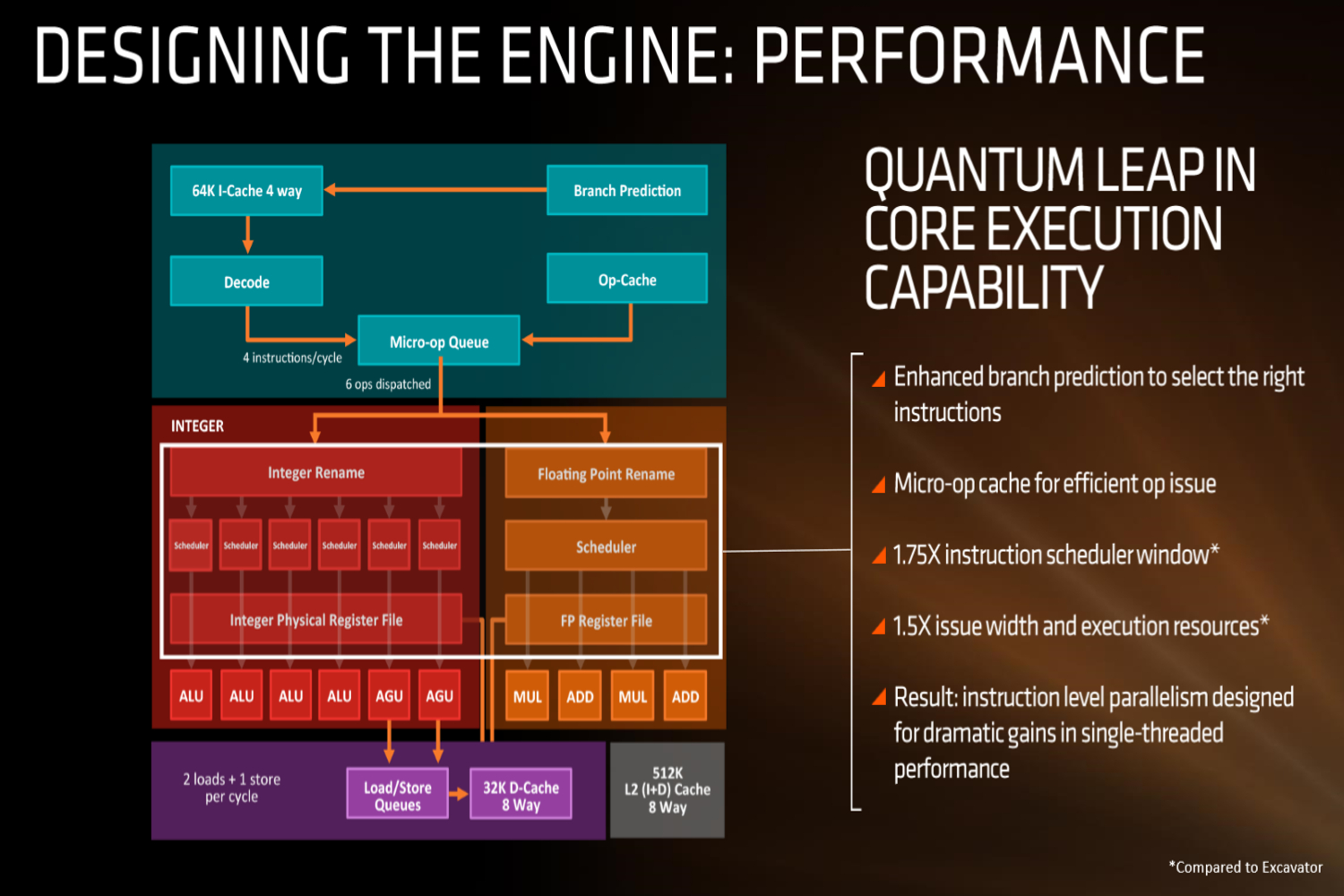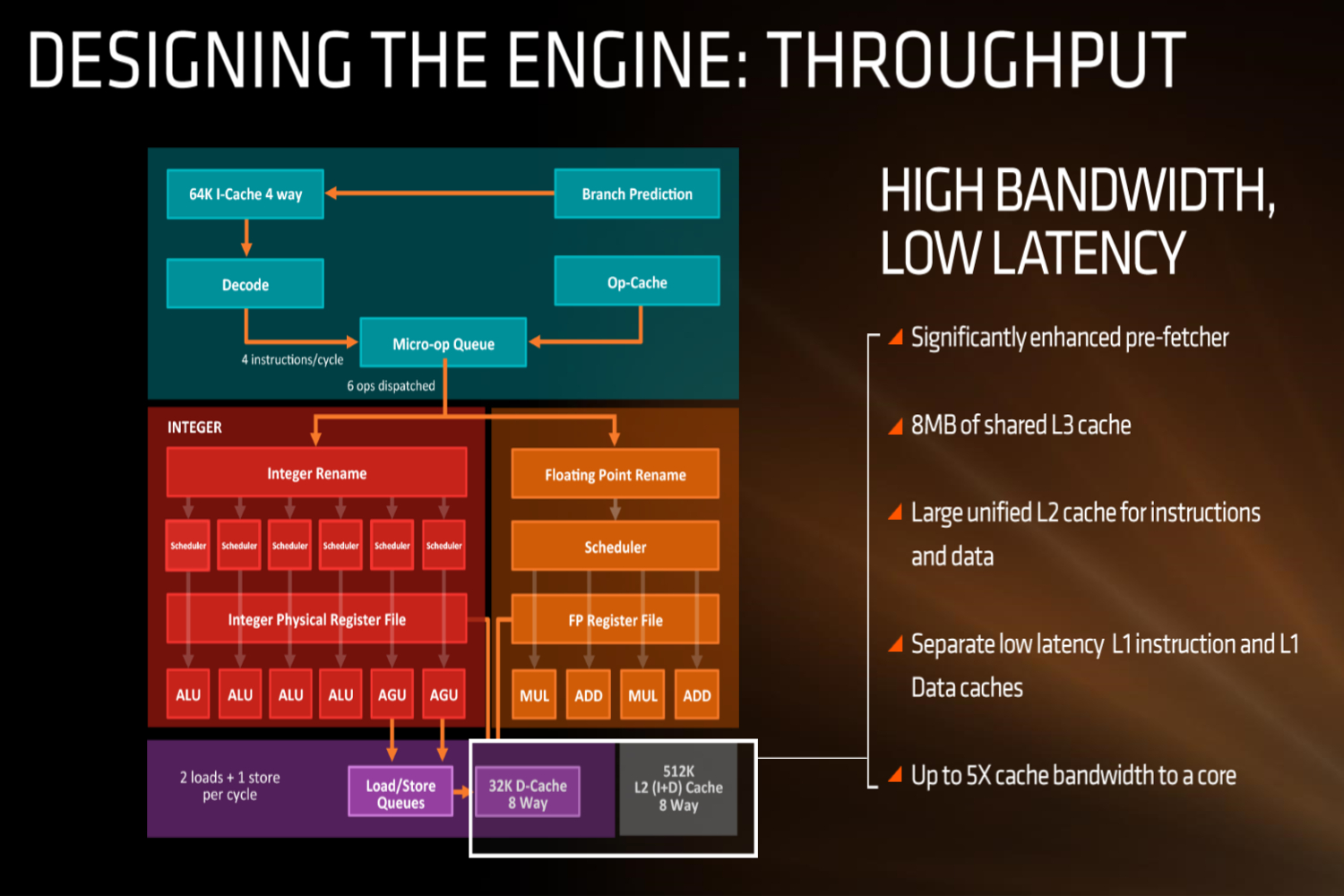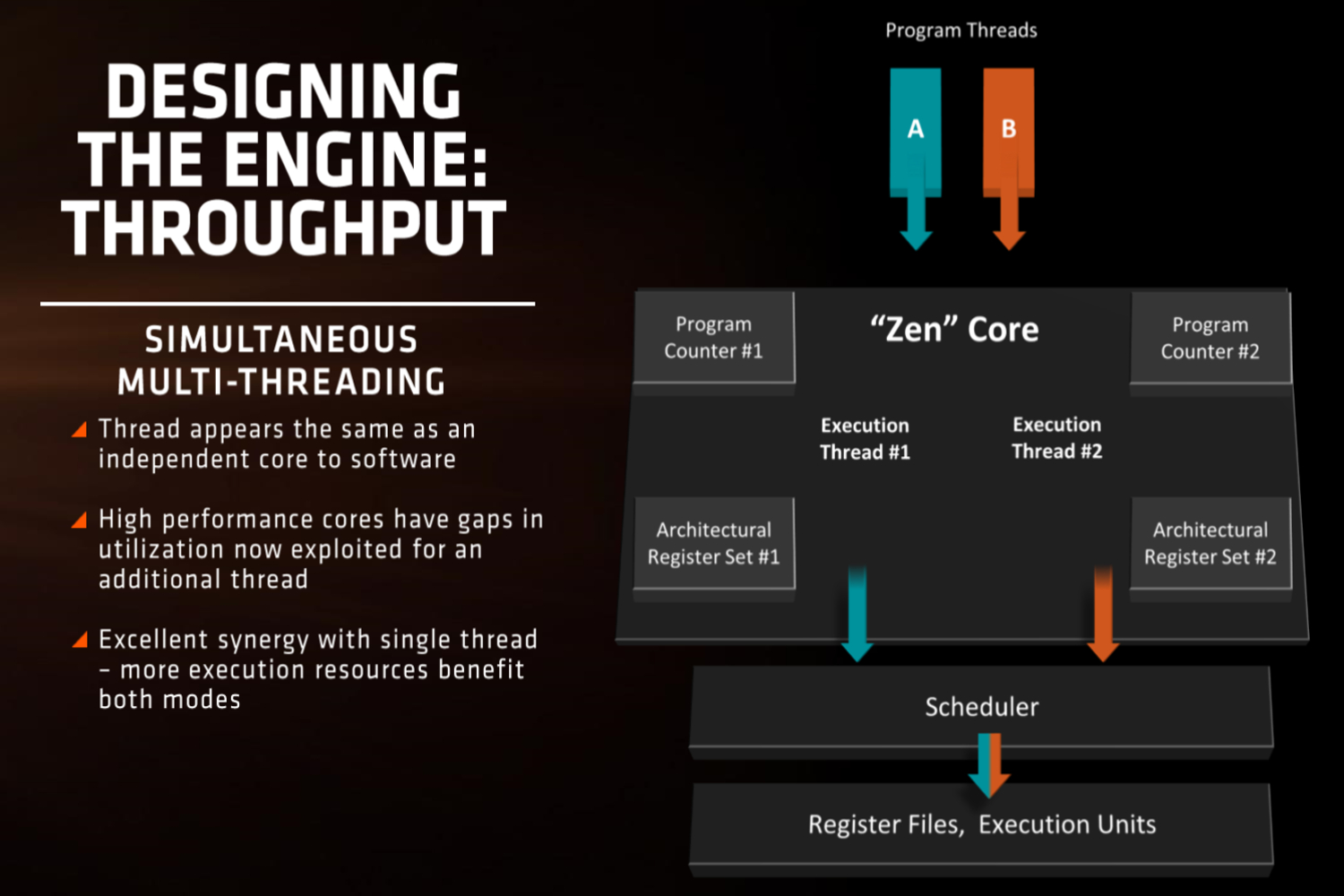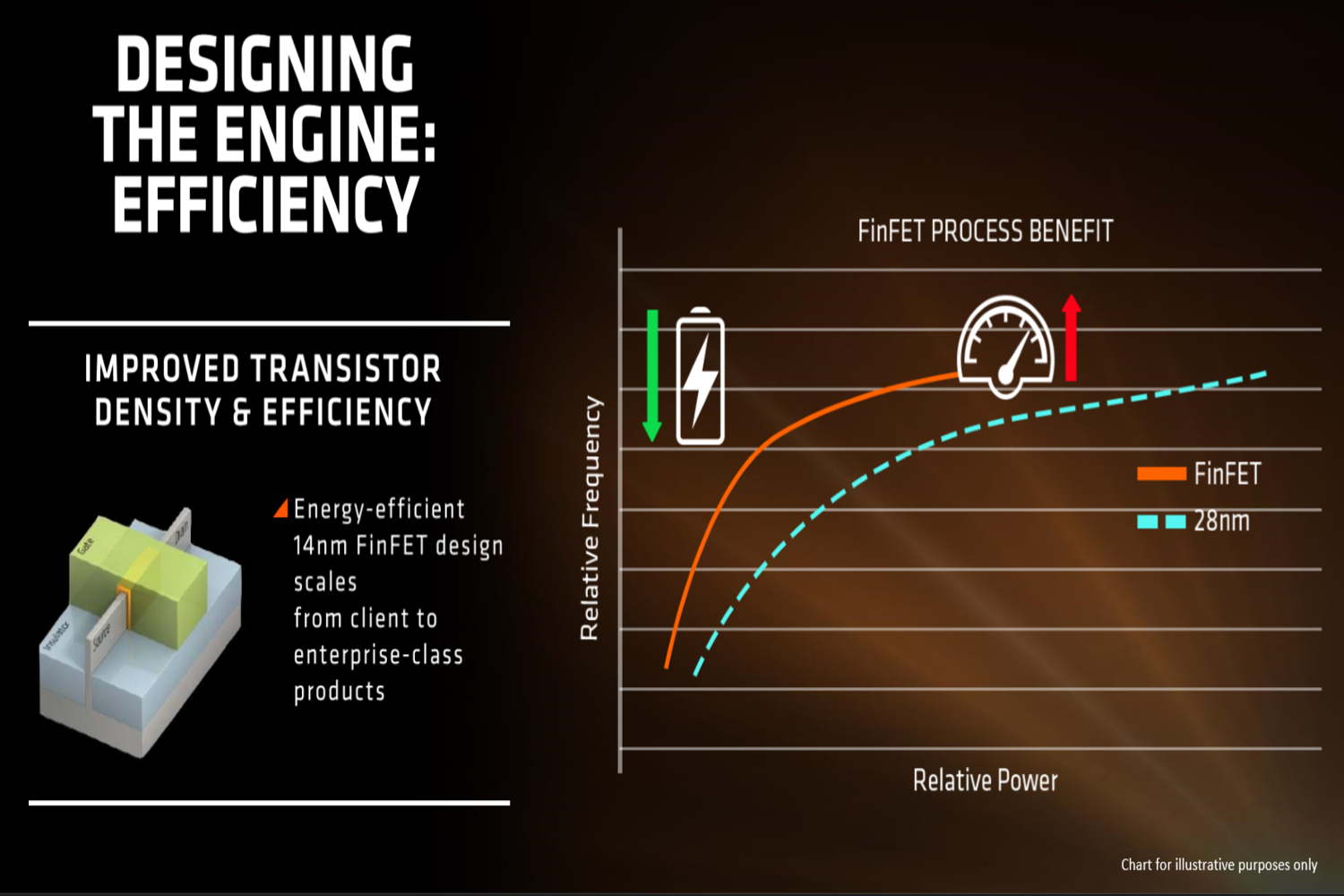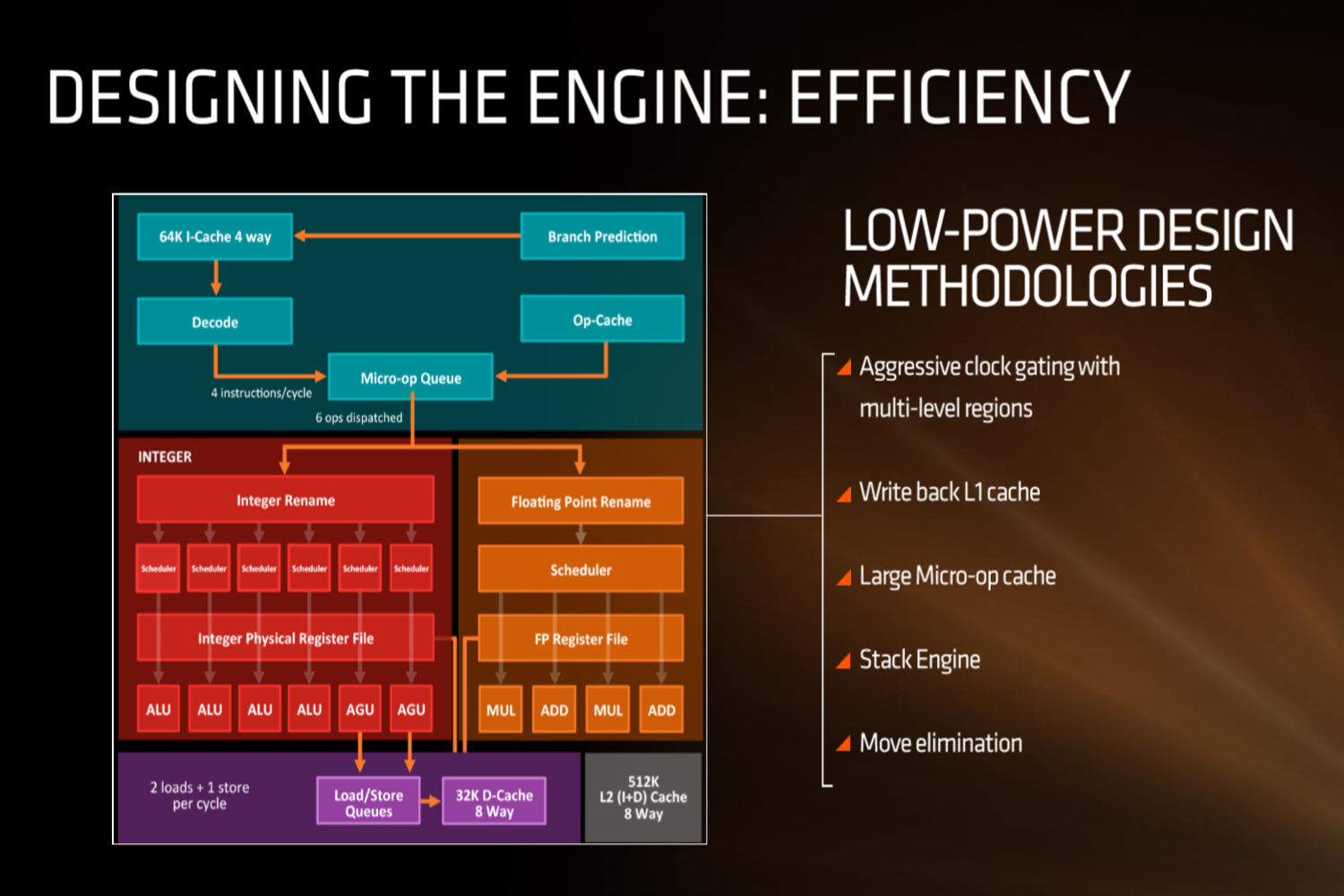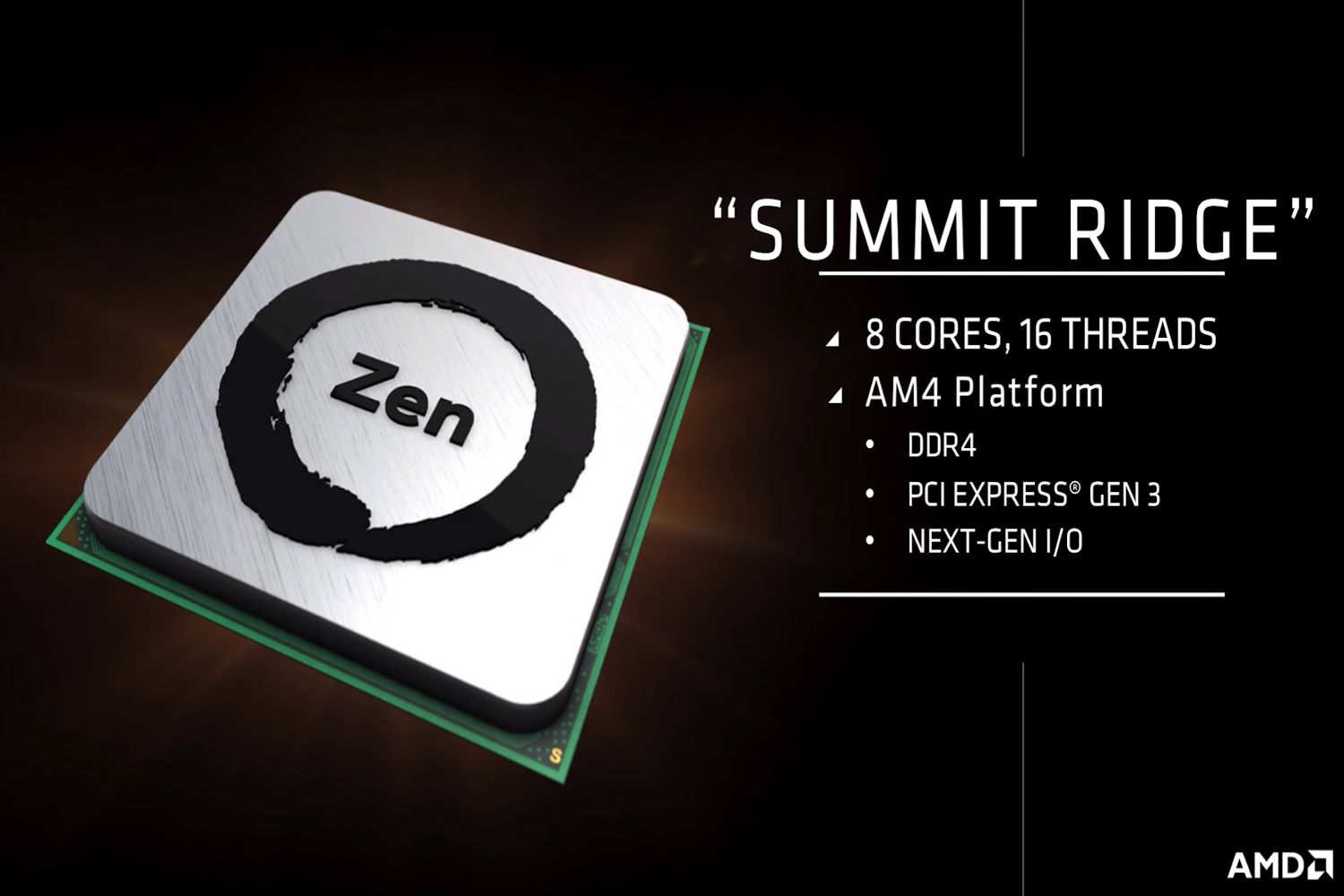The special event for the press and analysts, held Wednesday night during the Intel Developer Forum convention in San Francisco, was hosted by AMD CEO Lisa Su. She first indicated to the audience that AMD undertook an important-yet-massive performance-per-watt “journey” when it embarked on its quest for Zen. The company has made significant progress since then, and is now providing some rather significant disclosures on its current Zen and Summit Ridge development.
As previously reported, Summit Ridge will be based on 14nm FinFET process technology offered by GlobalFoundries, the same process used on AMD’s Polaris-based graphics chips. It will feature eight Zen cores and 16 threads and support AMD’s “Bristol Ridge” AM4 platform, which is also compatible with the company’s seventh-generation A-Series desktop processors. AM4 supports goodies like DDR4 system memory, the company’s APUs, PCI Express Gen3, USB 3.1 Gen2, NVMe, SATA Express storage, and loads more. OEM PC designs will sport the AM4 platform in solutions with A-Series processors sometime in this half of 2016.
Meanwhile, the technical Zen details provided by AMD in Wednesday’s presentation can be seen in our formatted gallery below for your viewing pleasure.
The first Zen-based product will appear in the high-end desktop enthusiast market. After that, Zen-based chips will roll out to the enterprise-class server market followed by mobile PCs and the embedded application market. Highlights include two threads per core for simultaneous multithreading (aka Hyper-Threading over at Team Intel), 8MB of shared L3 cache, 512K of L2 cache per core, and two AES units for safer computing.
One of the slides presented by Senior VP and CTO Mark Papermaster showed that each Zen core will have a “significantly” enhanced pre-fetch feature, separate low latency L1 instruction and L1 data caches, and up to five times more cache bandwidth for each Zen core. Other notable technical advancements include an enhanced branch prediction for selecting the right instructions, a 1.75x instruction scheduler, and more. All of this means dramatic gains in single-threaded performance.
“We assembled a team to create a grounds-up, from scratch, new CPU design for x86,” Papermaster told the audience. “It’s a brand new micro-architecture. A CPU that can scale from that high performance all the way down to PC and mobile applications. How do we get a 40 percent instruction per clock improvement from the previous generation? It starts with performance, throughput, and efficiency.”

As seen in the slide above, AMD lays out the evolution of its processor core technology since the introduction of its “Bulldozer” architecture. Plowing through “Piledriver,” “Steamtoller,” “Excavator,” and the current Zen, AMD has steadily increased the number of instructions-per-clock for each core while simultaneously dropping the amount of energy per cycle. It’s AMD’s way of showing the increased performance-per-watt the company has managed since the release of the older Bulldozer processor core.
Additionally, in a demonstration during the event, AMD compared an eight-core Summit Ridge processor sample against an eight-core Intel Core i7-6900K “Broadwell-E” down-clocked processor, both of which were set at 3GHz for an actual clock-to-clock, core-to-core, thread-to-thread boxing match. Using the multi-threaded Blender rendering benchmark, the company showed in real-time the Summit Ridge sample rendering the Zen logo slightly faster than Intel’s highly coveted CPU just launched back in June.

AMD also revealed its “Naples” SoC for enterprise-class servers that features a massive 32 Zen cores and 64 threads. Suresh Gopalakrishnan, CVP of Enterprise Engineering, showed two Naples chips crammed onto a two-socket motherboard that will be used in upcoming servers (seriously, why can’t we do that on desktop), as shown above.
“What AMD showed on Zen last night was very compelling on performance,” analyst Patrick Moorhead told Digital Trends via email. “There’s a lot of execution between now and launch, but at a minimum, I believe AMD will be in a much better position than they have been in years in processors. To put this in perspective, this is the biggest thing I’ve seen in 10 years in CPUs at AMD.”
According to AMD, the next twelve months will see GPU market share gains thanks to the current Polaris GPU architecture, and its upcoming “Vega” architecture slated for 2017 (if not sooner). The company also expects to return to growth in the PC market thanks to its Zen core technology, and to ramp up its new semi-custom business. AMD is also re-entering the “highly-profitable” x86-based server market thanks to its Naples SoC.
The best is yet to come, the company teases, with more information about Zen and Summit Ridge expected to be revealed during its Hot Chips 28 presentation taking place next week.

